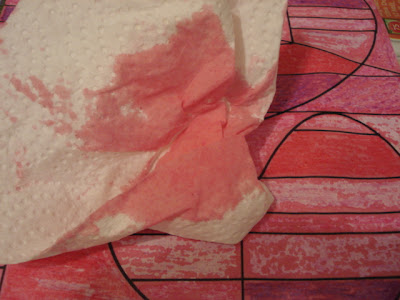Valentine's Day is fast approaching- it's one of my favourite holiday times as it involves alot of pinks, reds, glitter and sweets! So I have a couple of Valentine themed projects that I will share in the next couple of weeks.
The first project is a reposting of a Paul Klee inspired Valentine project my Grade 6 class made last year.
"Art does not reproduce the visible; rather, it makes visible." Paul Klee
Paul Klee was a Swiss-born artist who worked in a variety of styles during his career including Expressionism, Cubism and Surrealism; therefore, his work is difficult to classify into one style.
His work has a very whimsical, musical and almost child-like style. In fact, Klee greatly admired the art of children who he felt seemed to create free of any outside influences. He tried to achieve the same untutored simplicity in his own art.
If you even get a chance to visit Switzerland, check out the Paul Klee Museum in Berne. I visited it back in 2006 and it's fantastic. I knew a little about his work before I visited, but had no idea of the wide variety of different styles he had.
I left with a new appreciation and understanding of him afterwards.
 |
| Paull Klee, "The Rose Garden", 1921 Source |
This project focuses on his Cubist period; breaking up the picture plane into angular shapes. It also introduces the wax-resist technique.
This project took about 2- 90 minute periods to complete.
 |
| Paul Klee, "Landscape and the Yellow Church", 1920 |
Here's how we made these:
Fold a sheet of paper in half and cut out one or two hearts (or more).
Trace these onto a piece of cardstock (or any smooth paper).
Here, a student is practising first in her sketchbook.
Using a ruler, break up the picture plane into rectangles, squares, etc.
Here's a finished rough copy.
Pass over all the pencil lines with a Sharpie or black pencil crayon.
Then choose a few colours of wax crayons (4-5) and roughly colour in each sections,
alternating colours. Make sure to press hard.
Don't fill in all the paper- we'll be using paint for that.
Here's a close-up showing the white spots leftover- that is what you want.
Here's a student adding black pencil crayon after she finished colouring. Either way works.
Now for the wax-resist painting: we used tempera discs simply because I find them convenient and they work well. Watercolours, or liquid watercolours would also work brilliantly.
It is important to choose a colour that looks good with the wax crayon- you can choose a contrasting colour for a more dynamic effect, or a similar colour for a more calm effect.
Add a lot of water so it's more like an ink consistency.
Then, you simply paint over the entire artwork (go in broad strokes in one direction with a flat brush) and then blot up any excess paint that's floating on top of the wax crayon parts.
The paint will colour in all of the white spots and make the whole piece unified.
Dab excess paint off with a paper towel....
Ta da!
Grade 6 work:

































































